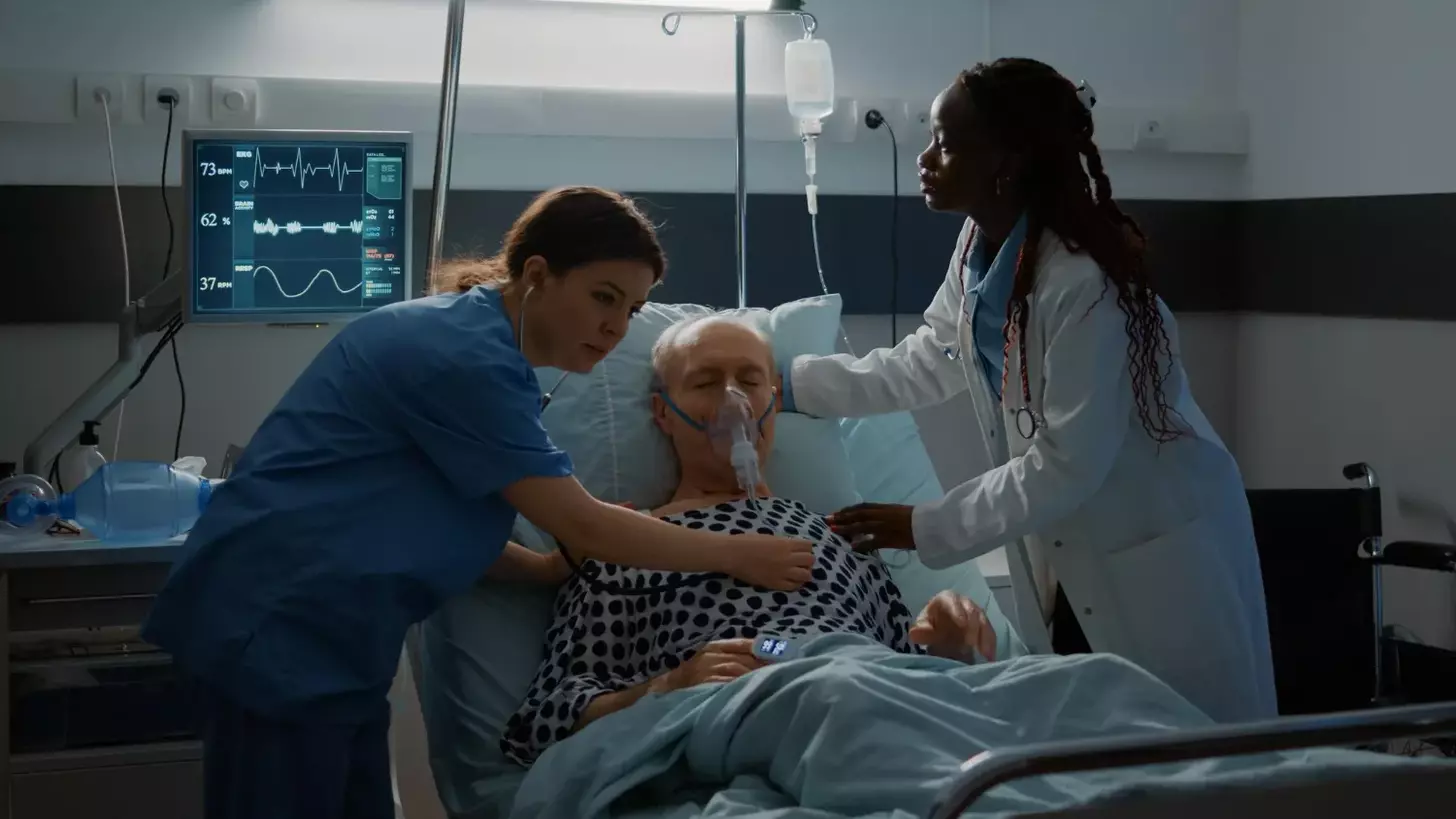Last Updated on November 26, 2025 by Bilal Hasdemir

Getting a diagnosis of malignant brain tumors can be scary. But, thanks to new research and treatments, there’s hope. At Liv Hospital, we focus on our patients. We use the latest technology, international knowledge, and care to help our patients the best we can.
New studies are showing great progress in fighting malignant brain tumors. We’re looking at new ways to treat them, like molecular strategies and experimental therapies. We dive into the latest in brain cancer treatment, talking about the challenges and chances for beating these tough tumors.
We’ll talk about different treatments, like surgery, radiation, and chemotherapy. We’ll also look at new therapies on the horizon. We’ll also talk about what the future holds for people with malignant brain tumors and what affects their treatment results.
Key Takeaways
- Advances in research and treatment are improving outcomes for patients with malignant brain tumors.
- Liv Hospital provides a patient-centered approach with cutting-edge technology and international expertise.
- Treatment options include surgery, radiation therapy, chemotherapy, and emerging therapies.
- Prognosis varies depending on several factors, including tumor type and patient health.
- Compassionate care is a priority at Liv Hospital, supporting patients throughout their treatment journey.
Understanding Malignant Brain Tumors
It’s important to know about malignant brain tumors to create good treatment plans. These tumors grow fast and spread to other brain areas.
Malignant brain neoplasms are different kinds of tumors. They come from various cells and have unique genetic traits. Common types include glioblastoma and malignant gliomas, among others.
Types of Malignant Brain Neoplasms
These tumors are sorted by where they start and how they look under a microscope. The World Health Organization (WHO) helps classify them.
| Tumor Type | Cell of Origin | WHO Grade |
|---|---|---|
| Glioblastoma | Astrocytes | IV |
| Malignant Gliomas | Glial cells | III-IV |
| Medulloblastoma | Cerebellar neurons | IV |
Glioblastoma and Malignant Gliomas
Glioblastoma is the most aggressive brain cancer. It grows fast and is hard to treat. Glioblastoma is a major type of malignant brain tumor.
Malignant gliomas, like anaplastic astrocytoma, are also aggressive. They need quick treatment. Knowing their molecular traits helps in finding targeted therapies.
How Malignant Tumors Differ from Benign Tumors
Malignant brain tumors grow fast and spread. Benign tumors grow slowly and are usually contained. This makes a big difference in treatment.
The main differences are in growth rate, how they spread, and if they can move to other parts of the body. Knowing these differences helps doctors choose the best treatment.
The Challenges of Treating Brain Cancer
Treating brain cancer is a tough task. It’s hard because of the brain’s complex nature. We face many obstacles, from the brain’s protective barriers to the tumors’ unique traits.
Blood-Brain Barrier Limitations
The blood-brain barrier (BBB) is a big problem in treating brain cancer. It keeps many drugs from reaching the tumor. The BBB limits the delivery of drugs, making it hard to get them to the tumor site effectively.
To get around this, researchers are looking into new ways. They’re working on:
- Creating drugs that can get past the BBB
- Methods to temporarily open the BBB
- Ways to deliver drugs that don’t go through the BBB
Tumor Location and Surgical Accessibility
Where brain tumors are located can make surgery hard. Tumors in tricky spots are a big challenge for surgeons. The proximity to vital brain structures limits how much of the tumor can be removed safely.
New surgical methods and tools are helping. For example:
- Better imaging helps plan and do surgery more accurately.
- Monitoring during surgery helps surgeons avoid damage.
- Less invasive surgeries can reduce recovery time and damage.
Cellular Heterogeneity Within Tumors
Brain tumors have different types of cells, some of which don’t respond to treatment. This heterogeneity can lead to treatment resistance and the tumor coming back.
To tackle this, researchers are studying:
- The genetics and biology of tumor cells
- Targeted treatments for specific cell types in the tumor
- Combination therapies to beat resistance
Understanding these challenges helps us see why we need new and varied ways to treat brain cancer. Developing effective treatments means knowing a lot about tumor biology, the brain’s barriers, and how to do surgery safely.
Is Brain Cancer Treatable? Current Treatment Landscape
Whether brain cancer is treatable depends on many factors. We’ll look at the current treatments for brain cancer. This includes what influences treatment choices and the importance of a team approach.
Factors Affecting Treatment Decisions
Several factors help decide the best treatment for brain cancer. These include the tumor type and grade, the patient’s health and age, and the tumor’s size and location. We use these to create a treatment plan that aims for the best results.
The tumor’s genetic makeup is also key. For example, certain genetic changes can affect treatment choices and outcomes.
Multidisciplinary Treatment Teams
A team of experts is vital for treating brain cancer. This team includes neurosurgeons, medical oncologists, radiation oncologists, neurologists, and rehabilitation specialists. Together, they create a detailed care plan for each patient.
Setting Realistic Treatment Goals
Setting realistic goals is important for brain cancer patients. These goals are based on the patient’s health, cancer type and stage, and personal wishes. Our team works with patients and their families to set goals that are achievable.
| Treatment Goal | Description | Key Considerations |
|---|---|---|
| Maximize Survival | Aggressive treatment to prolong life | Tumor type, patient health, treatment tolerance |
| Improve Quality of Life | Focus on symptom management and comfort | Patient preferences, symptom severity, palliative care options |
| Manage Symptoms | Controlling symptoms such as pain, seizures, or cognitive issues | Symptom type, medication options, supportive care |
Understanding brain cancer’s complexities helps us aim for the best outcomes. Our team is dedicated to providing full care and support during treatment.
Surgical Interventions for Malignant Brain Tumors
Surgery is key in fighting malignant brain tumors. It offers many ways to tackle this tough disease. The goal is to remove as much tumor as safe, keeping the brain working well.
Maximal Safe Resection Approaches
Maximal safe resection is a surgery method. It tries to take out as much tumor as it can without harming the brain. Studies show it helps patients by cutting down tumor size and easing symptoms.
We use top-notch imaging and navigation tools to guide surgeons. Maximal safe resection often uses MRI or CT scans during surgery. This helps ensure the tumor is removed safely and effectively.
Awake Craniotomy and Brain Mapping
Awake craniotomy is a surgery where the patient stays awake. It lets surgeons map brain functions in real-time. This way, they can avoid harming important brain areas.
This method is great for tumors near brain areas that control speech or movement. By keeping the patient awake, surgeons can map the brain. This helps them avoid damaging these critical spots.
Laser Interstitial Thermal Therapy (LITT)
Laser Interstitial Thermal Therapy (LITT) is a new surgery method. It uses heat to kill tumor cells. It’s good for tumors that are hard to reach or for patients who can’t have open surgery.
In LITT, a laser probe is placed in the tumor under imaging. The laser heats the tumor, killing it. This method is useful for treating tumors that come back or are deep inside the brain.
| Surgical Technique | Description | Advantages | Limitations |
|---|---|---|---|
| Maximal Safe Resection | Removing as much tumor as possible while preserving brain tissue | Improves patient outcomes, reduces tumor burden | Risk of damaging critical brain areas |
| Awake Craniotomy | Surgery performed while the patient is awake to map brain function | Preserves critical brain areas, reduces risk of neurological deficits | Requires patient cooperation, may not be suitable for all patients |
| LITT | Minimally invasive technique using heat to destroy tumor cells | Less invasive, suitable for deep-seated or recurrent tumors | Limited to specific tumor types and sizes |
Radiation Therapy Approaches
Radiation therapy is key in fighting brain cancer. We use different methods to target cancer cells. Each method is chosen based on the patient’s needs.
Fractionated External Beam Radiation
Fractionated external beam radiation treats tumors in many sessions. This method helps avoid harming healthy tissue. It’s great for tumors that respond well to radiation and are at high risk of coming back.
This technique splits the radiation dose. It helps kill tumor cells more effectively while protecting normal tissues. It’s a mainstay in treating brain cancers, balancing effectiveness and safety.
Stereotactic Radiosurgery (Gamma Knife, CyberKnife)
Stereotactic radiosurgery (SRS) is a precise radiation therapy. It uses advanced tools like Gamma Knife and CyberKnife. It’s perfect for small to medium-sized tumors, as it’s a non-surgical option.
SRS is very precise, which means less damage to the brain. It’s great for tumors hard to reach surgically or for those not good candidates for surgery.
Proton Beam Therapy Advancements
Proton beam therapy uses protons to kill cancer cells. It delivers a precise dose to the tumor, with less harm to nearby tissues. This reduces the chance of long-term side effects.
It’s best for tumors near important brain areas. New technology is making proton therapy even better. It’s becoming a top choice for brain cancer patients.
Chemotherapy and Drug Treatments
Chemotherapy is key in fighting brain cancer. It has many treatment plans. We use it to target cancer cells left after surgery or for tumors that can’t be removed.
Temozolomide and Standard Protocols
Temozolomide is a main treatment for brain cancer, like glioblastoma. It’s taken by mouth and stops cancer cells from making copies. The treatment involves taking it every day for a set time, then resting.
Temozolomide works well and is often paired with radiation therapy. This combo improves treatment results.
Bevacizumab and Anti-Angiogenic Agents
Bevacizumab is a vital drug for brain cancer treatment. It blocks the growth of new blood vessels. This stops tumors from getting the nutrients and oxygen they need to grow. It’s great for treating glioblastoma that comes back.
Bevacizumab is promising but needs careful use. It can have side effects and requires close watch.
Carmustine Wafers and Local Drug Delivery
Carmustine wafers are a special way to give chemotherapy during surgery. They’re put into the tumor space after it’s removed. As they break down, they release carmustine to kill any cancer cells left. This method puts the drug right where it’s needed, reducing side effects.
Using carmustine wafers has helped some patients with malignant gliomas do better.
Emerging and Experimental Treatments
The future of brain cancer treatment is bright. New therapies aim to help patients more. We’re moving towards treatments that target cancer cells better.
Targeted Molecular Therapies
Targeted molecular therapies are a big step forward. They aim to hit cancer cells without harming healthy brain tissue. They work by focusing on specific genetic changes in tumors. For example, treatments for gliomas with the IDH mutation are showing promise.
CAR-T and Other Immunotherapy Approaches
Immunotherapy, like CAR-T cell therapy, is changing cancer treatment. It involves modifying T cells to fight cancer. Though early, some brain cancer patients are seeing good results. Other immunotherapies, like checkpoint inhibitors, are also being tested.
Fusion Superkines and Novel Biologics
Fusion superkines and novel biologics are new areas in brain cancer treatment. These proteins target tumor growth. They combine different ways to fight cancer, hoping to reduce side effects. Scientists are studying their safety and effectiveness.
Tumor Treating Fields (Optune)
Tumor Treating Fields (TTFields) use electric fields to stop cancer cells from dividing. The Optune device, which delivers TTFields, has helped glioblastoma patients live longer when used with chemotherapy. This treatment is a big step forward, giving patients another option.
As we keep exploring new treatments, the future of brain cancer care looks promising. We’re moving towards treatments that are more tailored and use different approaches. This could lead to better outcomes and quality of life for patients.
Recurrence and Follow-Up Care
The journey to recovery for brain cancer patients is not just about treatment. It also includes careful monitoring for recurrence. Understanding the role of follow-up care and strategies for recurrence is key.
Monitoring for Tumor Recurrence
Regular check-ups and imaging studies are essential for catching recurrence early. We suggest MRI scans every 3-6 months, based on the patient’s health and tumor type. Early detection can lead to better outcomes.
Advanced imaging, like perfusion-weighted MRI and MR spectroscopy, offers more insights. This helps in spotting recurrence sooner.
Treatment Options After Recurrence
When recurrence is found, we look at various treatment options. These depend on the patient’s health, how widespread the recurrence is, and past treatments. Options include:
- Reoperation to remove the tumor
- Reirradiation with stereotactic radiosurgery
- Chemotherapy with drugs like temozolomide or bevacizumab
- Participation in clinical trials for new treatments
Choosing the right treatment is a team effort. It requires a detailed plan tailored to each patient.
Palliative Care Considerations
Palliative care is vital for managing symptoms and improving life quality for patients with recurrent brain cancer. We team up with palliative care experts to tackle pain, neurological issues, and other concerns. This ensures full support for patients and their families.
| Palliative Care Interventions | Benefits |
|---|---|
| Symptom management | Improved quality of life |
| Pain control | Reduced suffering |
| Psychosocial support | Enhanced patient and family well-being |
By adding palliative care to the treatment plan, we support patients better. We focus on their overall well-being during the challenges of recurrent brain cancer.
Prognosis Factors for Malignant Brain Tumors
When it comes to malignant brain tumors, several key factors are important. These factors include the tumor’s biology, the patient’s health, and how well they respond to treatment. Together, they help predict how a patient might do.
Tumor Type and Molecular Classification
The type of brain tumor and its molecular makeup are very important. Different tumors grow and respond to treatment in different ways. This affects how well a patient might do.
- Tumor Histology: The look of tumor cells under a microscope matters a lot.
- Molecular Markers: Certain genetic changes can greatly influence treatment results.
IDH Mutation and MGMT Methylation Status
Two specific markers, IDH mutation and MGMT methylation status, are key for predicting outcomes. Tumors with these markers often do better than those without.
- IDH Mutation: Tumors with IDH mutations tend to have a better outlook.
- MGMT Methylation: This marker is linked to better responses to some treatments.
These markers help doctors guess how a tumor might act and how it will react to treatment.
Age, Performance Status, and Extent of Resection
Other important factors include the patient’s age, how well they can function, and how much of the tumor was removed. These all play a big role in how well a patient might do.
- Age: Younger patients usually have a better chance of recovery than older ones.
- Performance Status: Patients who can function better tend to do better.
- Extent of Resection: How much of the tumor was removed is very important for prognosis.
Treatment Response Indicators
It’s also important to watch how a patient responds to treatment. This helps doctors understand how well the treatment is working.
- Imaging Studies: Scans like MRI or CT help see if the tumor is getting smaller.
- Clinical Assessments: Checking how well the patient is doing overall gives important clues.
By looking at these factors, doctors can give more accurate predictions. They can also tailor treatments to fit each patient’s needs.
Survival Statistics and Quality of Life
It’s key for brain cancer patients and their families to know about survival stats and quality of life. We must look at what affects survival rates and how to better patients’ lives.
Glioblastoma Survival Trends
Glioblastoma is a very aggressive brain cancer. Studies show that better treatments have led to slight increases in survival. But, glioblastoma is tough to beat, with a poor outlook.
Every glioblastoma case is different. Survival depends on age, health, and how much of the tumor was removed. It’s important for patients to talk about their chances with their doctors.
Other Malignant Brain Tumor Outcomes
Other brain cancers, like anaplastic astrocytomas and medulloblastomas, also need attention. The outlook for these cancers varies based on the type, grade, and how well they respond to treatment. We aim to give each patient the care they need.
- Anaplastic astrocytomas: These have a better outlook than glioblastoma but need strong treatment.
- Medulloblastomas: Found in kids, these tumors have seen better survival rates thanks to new treatments.
Neurological Rehabilitation and Support
Brain cancer treatment is more than just medicine. It needs a full support system for the patient’s well-being. Neurological rehab is key to helping patients regain lost abilities and keep a good quality of life. Our teams work with patients and families to offer the support they need.
Rehab programs are made for each patient, focusing on physical, occupational, and speech therapy. By tackling the physical and mental hurdles of brain cancer, we can greatly enhance patients’ lives.
Conclusion: The Future of Brain Cancer Treatment
As we learn more about brain tumors, the future of treatment looks bright. New research and trials are leading to better options. We’re seeing new therapies and treatments coming along.
There’s big progress in targeted treatments, immunotherapy, and new medicines. These changes could make treatments better and life easier for those with brain tumors.
We’re dedicated to top-notch care at our institution, including for international patients. We keep up with the latest in research and treatments. Our goal is to give the best care with kindness. The fight against brain cancer is getting stronger, and we’re ready to keep pushing forward.
FAQ
What are the most common types of malignant brain tumors?
The most common types are glioblastoma and malignant gliomas. These tumors grow quickly and are aggressive.
How is brain cancer diagnosed and what are the diagnostic criteria?
Doctors use MRI and CT scans to diagnose brain cancer. They also do biopsies. The criteria include the tumor’s molecular features, like IDH mutation and MGMT methylation status.
What are the challenges of treating brain cancer, and how do they impact treatment outcomes?
Treating brain cancer is hard because of the blood-brain barrier. This barrier stops some treatments from reaching the tumor. The tumor’s cells can also change, making treatments less effective. These issues make finding good treatments a big challenge.
What are the current treatment options for brain cancer, and how are they determined?
Treatments include surgery, radiation, and chemotherapy. New treatments like targeted therapies and immunotherapy are also being used. Doctors choose treatments based on the tumor type, the patient’s health, and what they hope to achieve.
What is the role of surgery in treating malignant brain tumors, and what are the different surgical approaches?
Surgery is key in treating brain tumors. It aims to remove as much of the tumor as possible. There are different ways to do this, like awake craniotomy and Laser Interstitial Thermal Therapy (LITT).
How does radiation therapy work, and what are the different types of radiation therapy used to treat brain cancer?
Radiation therapy uses high-energy radiation to kill cancer cells. There are several types, including fractionated external beam radiation and stereotactic radiosurgery. Proton beam therapy is another option.
What is the prognosis for patients with malignant brain tumors, and what factors influence treatment outcomes?
The prognosis depends on several factors. These include the tumor type, molecular classification, and genetic markers like IDH mutation and MGMT methylation status. Age, how well the patient can function, and how much of the tumor was removed also play a role.
What are the emerging and experimental treatments for brain cancer, and what is their potential?
New treatments include targeted therapies and CAR-T cell therapy. These treatments could improve outcomes and offer hope for patients.
How is recurrence monitored, and what are the treatment options for recurrent brain cancer?
Doctors watch for recurrence with imaging tests and exams. For recurring tumors, treatments include surgery, radiation, and chemotherapy. Palliative care helps manage symptoms and improve quality of life.
What is the importance of palliative care in supporting patients with brain cancer?
Palliative care is vital for brain cancer patients. It improves their quality of life by addressing physical, emotional, and social needs. It helps manage symptoms and side effects of treatment.
What are the survival statistics for glioblastoma and other malignant brain tumors?
Survival varies based on several factors. For glioblastoma, the prognosis is generally poor. But, with aggressive treatment, some patients can live for several years.
How can patients with brain cancer maintain their quality of life during and after treatment?
Patients can keep their quality of life by getting complete care. This includes neurological rehabilitation and support. Palliative care also helps manage symptoms and improves overall well-being.








